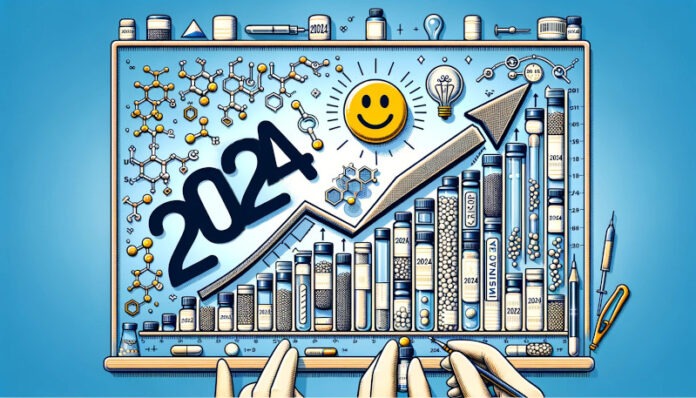Global trade in key raw materials for animal and human health is starting to return to pre-crisis levels. After four consecutive quarters of weak trade volumes, the data for the third quarter of 2023 leaves us well hopeindicating a recovery from the trend line historical.
However, experts warn that the next two quarters will be crucial to confirm the solidity of this recovery.
This is stated in the report “Current state of raw materials”, a report on “how the life sciences raw materials industry sees itself in difficult times” published by Kemiex, a digital trading platform specializing in active pharmaceutical ingredients, additives, vitamins, amino acids , minerals, phosphates and other food and feed additives.
The company conducted a survey among its customers and professionals in the raw materials sector to measure their “sentiment” at the end of (another) challenging year for manufacturing and trade.
Data collected by industry professionals provides valuable insights into the outlook for industry industries in 2024.
Stefan Schmidinger,
Head of Market & Supply Chain Research, Kemiex
In 2022, a concatenation of events that began in 2021 – such as struggling transport markets and the blockade of the Suez Canal, China’s energy shortage, emissions controls ahead of the Beijing Olympics, soaring prices, the ongoing crisis Ukraine – have generated a sudden contraction in demand in several sectors causing excess inventories for many companies.
Hopes for 2024
2023 has shown signs of recovery but the main expectations are focused on the beginning of the new year: according to the survey results, only 14% of those interviewed have already experienced a growth in commercial activity in the first three quarters of 2023 with an additional 15% counting on the results of the last quarter.
The majority of professionals (35%), however, have greater optimism for economic growth in the first half of 2024, while another 19% > is inclined to expect an increase in the second half of the year. The authors of the Pongo report also highlight that 17% expect a slower expansion, postponing growth expectations beyond 2025.
The judgment on the current market dynamics is consistent with these data: analyzing the purchase and sale volumes and the number of requests and transactions compared to the last 24 months, the majority of survey participants expressed a moderate opinion: 35% described the business as moderately traded, reporting stable but not significant growth. 31% rated the activity as regular, suggesting a healthy market situation but with some limitations.
Only 10% observed very active trade (level 5), while 12% defined it as active, a sign of strong growth but some (slight) limitations. 4% rated the lowest level, judging their commercial activity to be slow.
A difficult commercial context
According to the protagonists, the performance of companies is mainly affected by three factors, all of a commercial nature: fierce price competition (54%), the decline in customer orders and shorter planning cycles (52%), an excess of inventory resulting in its reduction (50%).
The socioeconomic context, however, also plays a significant role in influencing company results. In fact, critical factors emerge, primarily the increase in prices of raw materials and energy, reported by 40% of respondents as one of the main challenges.
Furthermore, 37% highlighted inflation and the resulting drop in purchasing power as additional stressors for companies and 25% highlighted the increase in interest rates which impacts financing, working capital and inventory management, thus further testing the resilience of businesses in an already complex economic context.
…but the mood remains positive
Despite the difficulties, the interviewees’ perception of the company’s performance was positive: when the participants to choose an emoji that best represented their company or business unit’s profit performance in 2023, 35% opted for an emoji that symbolizes a positive outlook, 25% chose an emoji that represents an average performance, and 15% selected an emoji that expresses a very positive trend. On the opposite side, 15% indicated a slightly negative performance while 10% chose an emoji that represents a significant decrease in profits.


